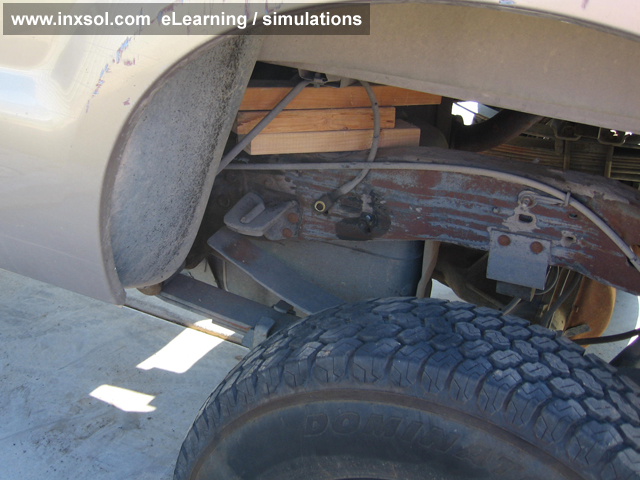2007 F150 Fuel Pump Driver Module Symptoms
Ford has used “returnless” fuel systems for quite some time now, but we still get many calls regarding the theory of operation and diagnosis of low or high fuel pressure problems. There are two types of returnless fuel systems. One is a mechanical returnless system and the other is the electronic fuel returnless system. This article will deal with the electronic returnless system used on 2004 and newer F-150 trucks. With the electronic fuel returnless system, the powertrain control module (PCM) monitors fuel pressure via a fuel rail pressure sensor (FRPS). This system utilizes a fuel pump driver module (FPDM) that the PCM sends a command to. The command varies the duty cycle to the pump to control fuel pump speed, thereby controlling fuel pump pressure.
Most often, the fuel pump has direct battery voltage applied to it at all times, and the ground side control is duty cycled to control average voltage applied to the fuel pump. Other returnless systems have the ground supplied to the fuel pump at all times and the power is duty cycled to control average voltage to the fuel pump. Either system works basically the same. The main point in diagnosing a defective fuel pump lies in monitoring the average power supplied to the fuel pump as the problem occurs. How To Install Windows 2000 On Virtualbox here. When a fuel pump is in good working order, it only needs an average of 6 to 9 volts to maintain adequate fuel pressure. As the pump begins to wear out, or if the fuel filter becomes restricted, average voltage to the fuel pump is increased to maintain good fuel pressure.

Ford Expedition - Probably Not Fuel Pump issue, but Fuel Pump Driver Module - if you have a Ford expedition, and you are pressing on the gas, and are. I decided to go have a look at my F150 that's been parked at my sisters for the winter; trying to figure out the power loss of my engine and fuel hogging. Oct 31, 2012 2007 Sport Trac LTD V8. Fuel Pump Driver Module. Loook up f-150 fpdm dissimalr metal corrosion and you will see waht I mean and we have the same issue. Here is my 2007 f150 which died without warning.the main issue for this is the fuel pump driver module.
When diagnosing fuel pressure issues, the first step is to retrieve trouble codes from the PCM. The PCM has the ability to recognize low fuel pressure from feedback from the FRPS. Typically, if the fuel pressure drops below 20 psi, the PCM will generate a P0191 trouble code. This code indicates that the PCM still has good communication with the FPDM, but sees that the fuel pressure is out of range via the FRPS. If the PCM sets a code P1233, this indicates that the PCM has lost communication with the FPDM, either from a defective FPDM, loss of battery voltage from a tripped inertia switch, loss of ground, or wiring harness problems affecting the Monitor or Command circuits. Fsx Airport Scenery Downloads there. Retrieving the codes will dictate which diagnostic path to follow.
Sometimes there are no codes set, although fuel pressure drops below specs. A mechanical fuel pressure gauge should always be installed to compare actual fuel pressure to the FRPS. Although the FRPS seldom fails, it can send a false reading to the PCM indicating that the fuel pressure is actually higher than it really is. The FRPS is a typical three-wire sensor that utilizes a 5-volt reference voltage and ground wire and sends the sensor values to the PCM. In general, the higher the feedback voltage, the higher the fuel pressure is. With Ford's FRPS voltage and fuel pressure chart, specs are as follows: 4.5 volts = 70 psi 3.9 volts = 60 psi 3.4 volts = 50 psi 2.8 volts = 40 psi 2.2 volts = 30 psi 1.6 volts = 20 psi 1.1 volts = 10 psi 0.5 volts = 0 psi This sensor can be found on most scan tool data stream and labeled as “FRP.” It is important to note that the FRPS reading on the scan tool will read 8 to 10 psi higher than the mechanical fuel pressure gauge unless the vacuum hose is removed from the FRPS; then the readings will come close to matching each other.